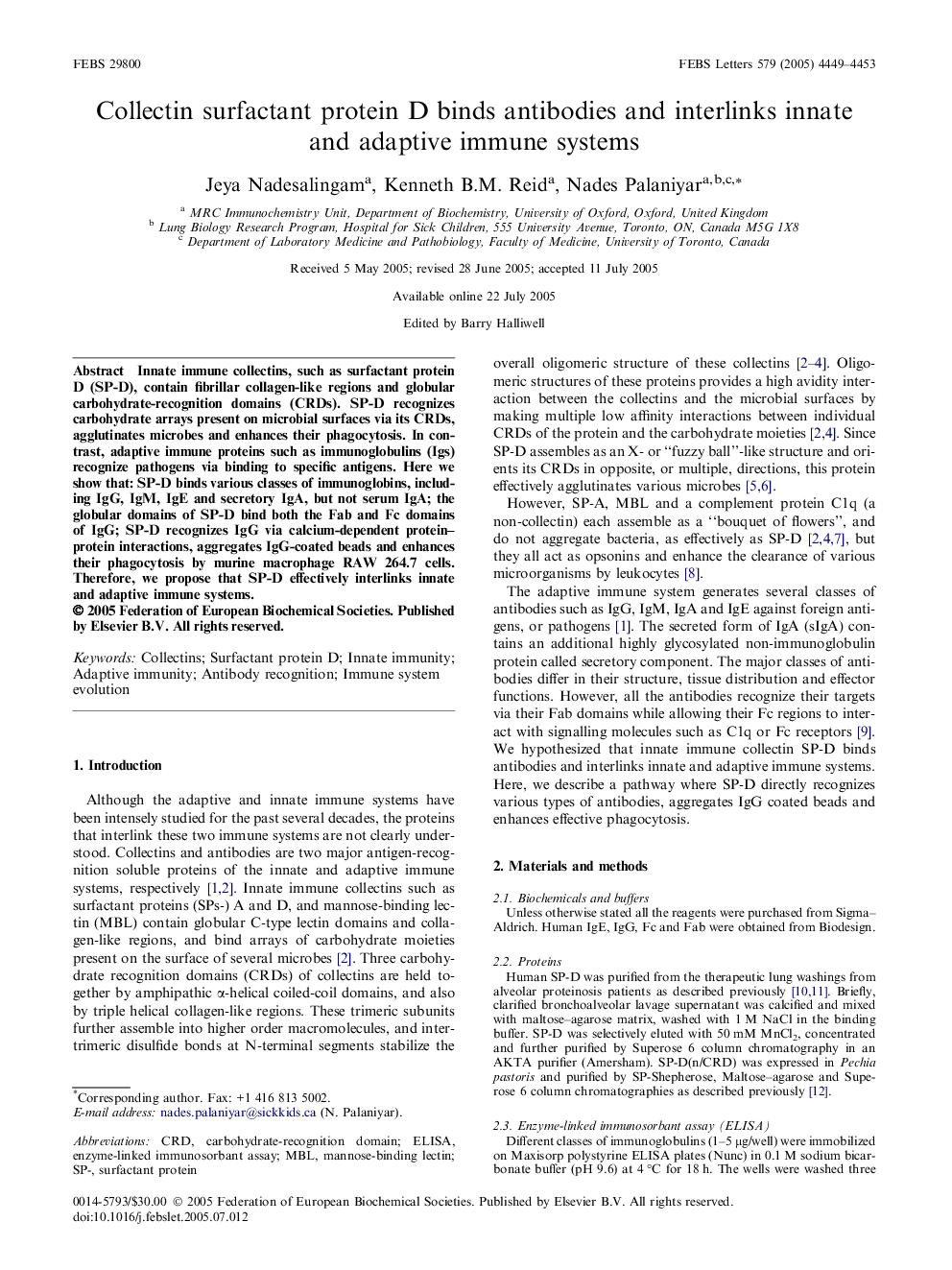| Article ID | Journal | Published Year | Pages | File Type |
|---|---|---|---|---|
| 2053373 | FEBS Letters | 2005 | 5 Pages |
Innate immune collectins, such as surfactant protein D (SP-D), contain fibrillar collagen-like regions and globular carbohydrate-recognition domains (CRDs). SP-D recognizes carbohydrate arrays present on microbial surfaces via its CRDs, agglutinates microbes and enhances their phagocytosis. In contrast, adaptive immune proteins such as immunoglobulins (Igs) recognize pathogens via binding to specific antigens. Here we show that: SP-D binds various classes of immunoglobins, including IgG, IgM, IgE and secretory IgA, but not serum IgA; the globular domains of SP-D bind both the Fab and Fc domains of IgG; SP-D recognizes IgG via calcium-dependent protein–protein interactions, aggregates IgG-coated beads and enhances their phagocytosis by murine macrophage RAW 264.7 cells. Therefore, we propose that SP-D effectively interlinks innate and adaptive immune systems.
